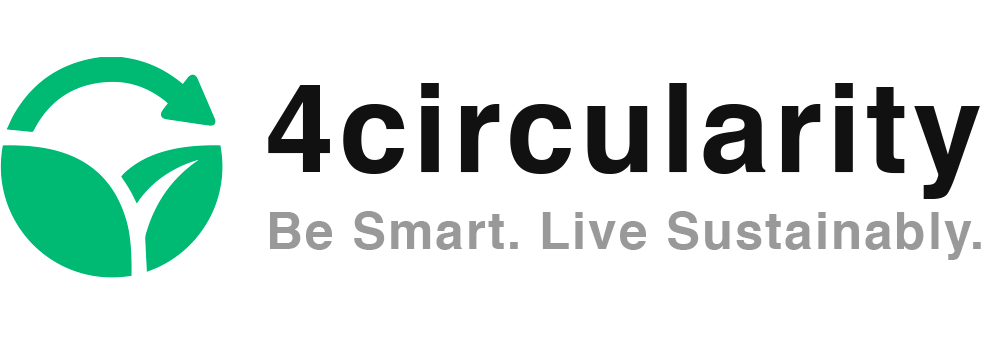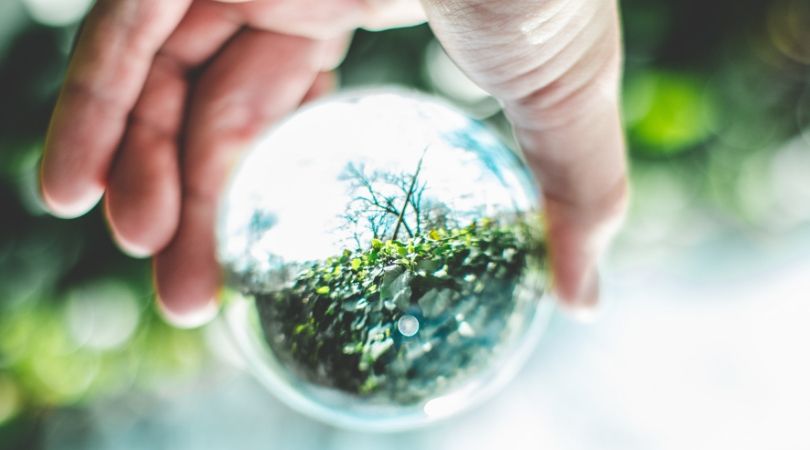Companies concentrating on sustainable development and decreasing their carbon footprint will be the most profitable ones in the future. Circular economy provides fantastic opportunities for businesses.
It is seen as a trillion-euro opportunity because it increases economic growth, it creates new jobs and competitive advantages for companies, it encourages creating new technologies and innovative solutions, it reuses post-consumer materials which is seen as the most efficient material management practice and it aims at avoiding unnecessary exploitation of global resources and thus mitigates the impacts of climate change.
When talking about circular economy, bioeconomy is often mentioned. These two models are very close to each other where circular economy includes biomass cycles and vice versa.
In this blog post I want to address the subject that I am passionate about; circular economy and bioeconomy and explain some of many opportunities these economic models can create in our society.
What is circular economy?
The idea in circular economy is to move from traditional one-way value chain to a multi cycle model. The objective is to maintain the value of products, materials and waste by reusing, reproducing, repairing and efficiently recycling so that waste and materials loss is minimized. The biggest potential circular economy can provide is for heavy industries, forest industry, nutrition, sharing economy and second-hand markets.
Circular economy gives us the keys for living more sustainable, cleaner and safer life. It makes us stop unnecessary exploitation of natural resources which is the main cause of the climate crisis. It “closes the loop” by creating a material cycle, which in its simplicity, includes the raw material, production, use and recycling. Once the first cycle is done it brings back the raw material for reuse. On the next cycle the raw material is now recycled material from the previous cycle and will continue cycling in the circular economy cycle as long as possible.
In the old linear consumption model the raw material was treated as non-recyclable waste after the production and use. Waste was not seen valuable and it lost its value in the system and released huge amounts of CO2 in the atmosphere. In circular economy, waste is seen as valuable resource what companies can reuse to produce new products. The reuse of raw materials through recycling absorbs CO2, reduces the production of virgin materials and avoids exploitation of the limited resources.
Bioeconomy is an important part of the circular economy
Bioeconomy is sustainable use of renewable biomass. Bioeconomy includes only organic resources and doesn’t include unorganic recources such as fossil-based oil which is non-renewable, limited resource. Renewable natural resources are used in bioeconomy to produce food, products, energy and services. With bioeconomy we can decrease the dependency on fossil resources and to increase self-sufficiency, reduce ecosystem exploitation and mitigate climate crisis.
Biotechnologies can be devided into four different areas; blue biotechnology, red biotechnology, green biotechnology and white biotechnology. Blue sector represents oceans and all other water-based technologies. The red sector represents pharmaceuticals and personalised medicine. The green sector consists of forest, wood, and agriculture but also of transgenic plants and cloned animals. The white industrial sector consists of the usage of renewable materials to make bioplastics and biofuels or other products based on recycling.
The white sector connects bioeconomy with circular economy. Organic, renewable resources such as biogas is used for bio fuel or burned to make energy. Cellulose that comes from wood products manufacturing as a side product when manufacturing paper can be used for bioplastics and textiles production. Another wood based material is cupro which is soft as silk and its used as a textile. Many products made from plastic can be recycled up to 10 times. Wood-based material fibers can be generally recycled 5-7 times.
Product design in circular economy
The circular economy model makes businesses think hard about product design. How can we create a product that is by its form and size the most suitable to the multi-cycle model of circular economy? Since circular economy includes several cycles of recycled material intakes to the production, the design and packaging solutions of the products must be carefully thought, ecological and fit to the available sorting and recycling facilities.
In order to minimize the product carbon footprint, the packaging materials should be fossil-free, renewable, bio-based or biodegradable. One example of an eco-design is the facility to separate different parts of the packaging to make it easy for consumers to recycle. A well designed juice can includes easily separable bottle top which goes to the plastic waste and a folding packaging which goes to the carton waste. Eco-designed take-away salad should include biodegradable bowl with compostable lid and cutlery.
One of the biggest pollutants are electronic devices which includes several fossil-based minerals. Electrical devices are more and more designed as easy to repair by including changeable parts. For example, the mobile phone repairing is a blooming business and a great result of circular economy. What was before treated as problem waste and brought to the landfill, is now collected, repaired and reused by giving it a new life.
Finland as a forerunner in Circular Economy
Finland is one of the world’s forerunners in circular economy. This year the annual Word Circular Economy Forum 2019 (WCEF2019) was organised by The Finnish Innovation Fund “Sitra” and took in place in Helsinki, Finland in the beginning of June. The forum brought together an international audience of business professionals, public sector stakeholders, NGOs, associations, research institutes and other stakeholders.
I took a flight from Paris to Helsinki (I know, I feel horrible about it considering the carbon footprint I created!) for two days to hear about the best business solutions and latest innovations, bioplastics and microplastics in materials, fashion in circular economy and the opportunities of digitalization in circular economy.
My five biggest take-aways from the forum were:
- Importance of scaling up!
- Innovative solutions
- Youth active role
- Investments and private-public sectors co-operation and impact
- More bio-based, biodegradable, safe and recyclable new materials
Scaling up means transformation of waste into resource. Making a product as a service is a key objective for businesses when they think about taking circularity in their business strategies. Private sector participation and investments are needed for scaling up activities. Innovative solutions and redesigning products and services are continuously needed for achieving their long-lasting life-cycle and longer durability.
Public sector is needed for making regulations and tightening taxation against non-sustainable activities. Virgin plastics production should be banned, we have already more than enough plastic waste in our hands that can be converted into new recycled plastic products. Making safe materials from bio-based, biodegradable or recycled materials is in the core of sustainable materials development.
For the last but not least, young people participation is a crucial factor because they are the ones who are and will be experiencing the full effects of the climate change. With their new, fresh ideas they can affect to the decision makers and they are indeed the best in linking digitalization with the sustainable thinking.
The opportunities, the opportunities
Someone’s waste is someone else’s treasure. Digitalization is an important factor in circular economy because it creates limitless opportunities for businesses. Online applications can be used efficiently in the sharing economy. Small and big electronic devices and furniture can change their owner in an application interface for consumers. Houses and apartments can be shared or switched during holiday periods or whenever no one is there, for gaining money and to use the resources efficiently for not leaving apartments or houses empty for long periods of time.
The food waste problem can be solved by multi-cycle model of circular economy and with the help of digital solutions. New start-ups are created around food spoilage by selling excess food from restaurants with very affordable prices including that the client comes to pick up the portions they have bought. The restaurants and clients meet on an online application interface where orders are done through secured payment system. These kind of applications are a great way to answer to the food waste problem and should expand everywhere.
Digital solutions can also be used as education tools. Schools and other educative institutes could benefit from learning materials on recycling which could be used via tablets in a classroom. New video game start-ups on the other hand are already building infrastructures to spread awareness of circular economy for the gamers. The player can, for example, add green areas in cities when playing strategic conquest games or games dedicated to circular economy.
Fashion industry belongs to the TOP 3 of the most pollutant industries which are causing the changes in the climate. The other two are oil and transport. Fashion industry have various opportunities in using circular economy thinking in their material intake, supply chains, energy use and transportation. For example, a company designing and manufacturing long-lasting, multi-usage accessories such as bags and belts can collect agriculture waste such as salmon skins or elk skins or leather waste from furniture companies to produce their small sized products. This is resource efficiency at its best and all stakeholders benefit.
Conclusions
Let’s face it, the Earth can live without humans but humans cannot live without the planet Earth. Sometimes we forget that there is no planet B, a planet that would be similar to the Earth. There is no place where we could escape and continue living once the Earth becomes unbearable to live in. All the means must be used to stop the contamination of our planet.
Circular economy creates massive economic opportunities for food and agriculture market, cities, energy and materials industry and health and well-being. All stakeholders of these industries should sustainably take advantage and use the opportunities out there to help us achieve the common goal of a global low-carbon economy. By providing sustainable and profitable products and services companies will win the consumers attention. Circular economy can be a trillion-euro opportunity if its used as a focus for a business.
We should, by all means, cherish the planet we live in and make its resources last for the future generations.
Some sources:
Finnish Innovation Fund Sitra - About Circular Economy
WCEF2019 Summary
European Commission - Bioeconomy Policy


One Reply to “Circular Economy – A Trillion-Euro Opportunity”